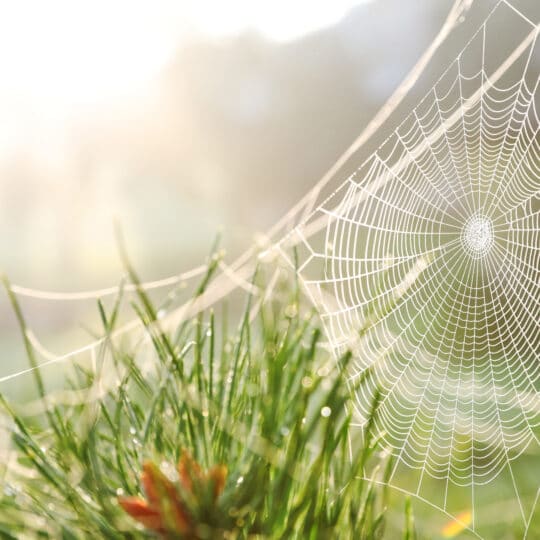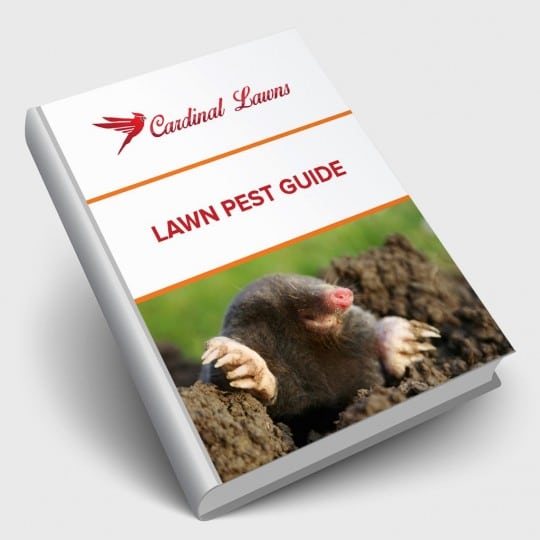Six Common Winter Lawn Pests
And How to Control Them
Posted
December 10, 2020

We may hear about certain plants and animals going dormant during winter, but what about pests? While they may not be out and about, they could be holed up on your lawn riding out the season. Learn more about some of the most common winter lawn pests and what you can do to rid your yard of them.
Is Your Lawn an Overwintering Resort?
While some insects may die off when it gets cold, others look for a spot to overwinter—and it could be your lawn. What makes a cozy spot for pests?
- Sturdy structures, like rocks, lawn ornaments, or foundations.
- Layers of mulch
- Leaf piles
- Tall grass
- Thatch
- Wood piles
Pests are just like everyone else. They need food, water, and a warm spot to rest from the cold. Depending on the conditions in your yard, it could be the perfect place.
Six Common Winter Lawn Pests
Here are some of the most common pests that could be taking up residence in your grass as we read.
- Grubs. Deep under the soil, these pests are patiently waiting to resurface in the spring to eat, transform into beetles, and eat some more. Not only do they do damage by chewing grass roots, but they attract other pests, like moles and skunks, looking for a grubby snack. Now your lawn is being attacked from both sides of the surface. Grub control takes planning, especially if you’ve had the problem before.
- Ants. Before the spring and summer picnics, ants will march through your lawn to get to any tiny crack or hole in walls, windows, doors, or foundations. Once inside they’re sure to find any available food source, so make sure it’s all properly stored. Ant traps may work, but try to stop them before they get in by sealing any cracks and applying pesticide around problem areas.
- Fleas and Ticks. While these pests are known for causing trouble in the warmer months, they can survive the colder months in brush and leaves. They can still do damage if they find their way inside—whether on a pet or not. Continue to be vigilant about pet flea and tick prevention and check your animals and humans before they come inside.
- Chinch bugs. Not only are these pests destructive, but they’re also tough enough to survive the winter. After they suck the juice out of grass and inject it with an obstructive substance, the plant withers and dies while the bugs grow and prosper. They spend the winter hiding in thatch and dead trees or huddled around the foundation of homes and buildings. To help keep them away, remove any thatch, and keep your lawn healthy and hydrated.
- Stink bugs. When these shielded bugs start marching up your walls and windows, you can see how their tough appearance may help prepare them for winter. They prefer the warmer weather, which is why they’re more active in spring and summer. But they won’t mind shacking up with you, so make sure all cracks are sealed to help keep them out.
- Spiders. They may help keep other pests out of your home, but they’re still not always welcome, especially poisonous ones. There are special sprays and powders you can apply for perimeter control.
Keeping Pests Away this Winter
One of the best ways to keep pests out of your yard is to keep your lawn healthy.
- Keep trees and bushes trimmed and away from your home
- Don’t leave any piles of leaves around
- Keep your lawn trim
- Remove any dense brush
- Pick up toys and other unnecessary lawn decor
- Move any play equipment away from the edge of the woods, dense brush, or long grass.
If you’re still having trouble taming lawn pests this season, contact Cardinal Lawns to help. After a consultation, we’ll make a plan to get your grass back in shape any time of year.

Download Your FREE Lawn Pest Guide
Pests become most prevalent during the heat and humidity of summer. Take some time to learn about the signs of infestations before any damage can be caused to your landscape. This handy guide will teach you how to spot common lawn pests and how to keep them from causing harm to you and your property.